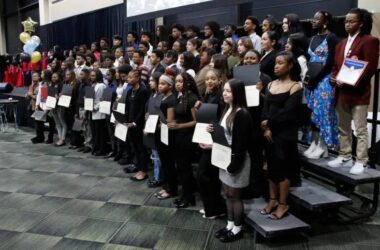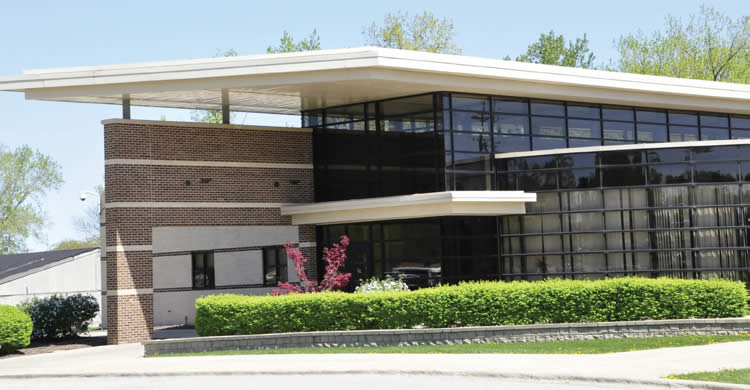
CHICAGO–(ENEWSPF)–June 13, 2014. Researchers chronicling contributions made by early African American artists and intellectuals in Chicago will present groundbreaking evidence of an arts scene that flourished long before the Harlem Renaissance or Black Chicago Renaissance during a public forum being held June 18 at Roosevelt University, 430 S. Michigan Ave., Chicago.
 “Beyond the greatness of Chicago’s blues, jazz and gospel music, there is a story to be told about the music, literature and other creative expression by African Americans in this city 100 years ago,” said Christopher Reed , professor emeritus of history at Roosevelt and lead researcher of a new and ongoing National Endowment for Humanities project.
“Beyond the greatness of Chicago’s blues, jazz and gospel music, there is a story to be told about the music, literature and other creative expression by African Americans in this city 100 years ago,” said Christopher Reed , professor emeritus of history at Roosevelt and lead researcher of a new and ongoing National Endowment for Humanities project.
The project entitled “Root, Branch and Blossom: Exploring Early 20th Century Black Cultural Achievement, 1893-1930” is looking at African American culture and arts in a period of history for blacks in Chicago that until now has focused largely on race riots and establishment of ghettoes. (An historic photo of the South Side Male Orchestra is pictured above and an historic Choral Society photo is at right.)
“I’ve been amazed to see how much support there was and how many patrons there were during this time period for African American dancers, writers, musicians and other artists in Chicago,” said Reed, who will share findings with the public on the early African American cultural experience in Chicago.
 The forum will be held from noon to 2 p.m. June 18 in Roosevelt’s 10th floor Murray-Green Library, 430 S. Michigan Ave. Speakers will include: Reed, who will discuss “An Amazingly High Level of Community Support for ‘Classical’ Cultural Activities;” Bonnie C. Harrison, an assistant professor of social sciences at Kennedy King College, who will profile “Archibald J. Motley: A French Negro in Chicago,” who was an Englewood portrait artist of the day; and Amy M. Mooney, a history professor at Columbia College Chicago, who will discuss “Strategies for Visualizing Cultural Capital: The Black Portrait.” (At left is an historic photo of a Lady Orchestra).
The forum will be held from noon to 2 p.m. June 18 in Roosevelt’s 10th floor Murray-Green Library, 430 S. Michigan Ave. Speakers will include: Reed, who will discuss “An Amazingly High Level of Community Support for ‘Classical’ Cultural Activities;” Bonnie C. Harrison, an assistant professor of social sciences at Kennedy King College, who will profile “Archibald J. Motley: A French Negro in Chicago,” who was an Englewood portrait artist of the day; and Amy M. Mooney, a history professor at Columbia College Chicago, who will discuss “Strategies for Visualizing Cultural Capital: The Black Portrait.” (At left is an historic photo of a Lady Orchestra).
“There is a whole cultural world that African Americans inhabited during the time period that no one knew much about before we started this research,” said Reed, who has made a treasure trove of discoveries including contributions by early African Americans composers, artists, musicians, poets and others in places like the Auditorium Theatre, Chicago Symphony Orchestra, Art Institute, Northwestern University, Chicago Musical College as well as many other cultural institutions in the city.
 NEH researchers are currently interviewing elderly African Americans about memories handed down from the time period, and will be presenting their findings in a series of four more public forums to be held at Roosevelt University through 2016. A public web site on the period’s African American intellectual and artistic figures and their work is being planned; a book of essays will be forthcoming on the roots of African American Culture in Chicago during the early 20th Century; and teacher-training workshops sharing new knowledge about the period’s flowering – long before the Harlem Renaissance or the Black Chicago Renaissance began – with the region’s K-12 teachers also is being planned. (At right is an historic photo of Quinn Chapel where many African American performances were held).
NEH researchers are currently interviewing elderly African Americans about memories handed down from the time period, and will be presenting their findings in a series of four more public forums to be held at Roosevelt University through 2016. A public web site on the period’s African American intellectual and artistic figures and their work is being planned; a book of essays will be forthcoming on the roots of African American Culture in Chicago during the early 20th Century; and teacher-training workshops sharing new knowledge about the period’s flowering – long before the Harlem Renaissance or the Black Chicago Renaissance began – with the region’s K-12 teachers also is being planned. (At right is an historic photo of Quinn Chapel where many African American performances were held).
Source: roosevelt.edu












